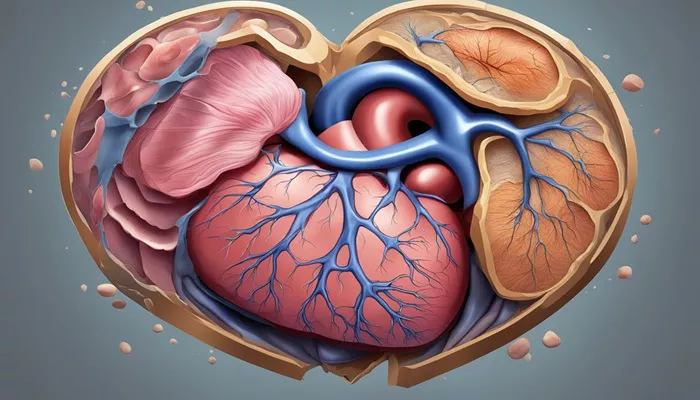Hyponatremia, characterized by low sodium levels in the blood (below 135 mEq/L), is a common electrolyte disorder that can have serious health implications. Hyperlipidemia, defined as elevated levels of lipids (fats) in the blood, has been identified as a potential contributor to this condition. This article explores the mechanisms by which hyperlipidemia can lead to hyponatremia, emphasizing the role of pseudohyponatremia and other related pathophysiological processes.
Introduction to Hyponatremia And Hyperlipidemia
Hyponatremia is often asymptomatic but can lead to severe neurological complications if not addressed. Symptoms may include headache, confusion, seizures, and in extreme cases, coma. The normal serum sodium concentration ranges from 135 to 145 mEq/L, and deviations from this range can occur due to various factors, including medications, fluid overload, or underlying medical conditions.
Hyperlipidemia is primarily classified into three types based on lipid profiles: hypercholesterolemia (high cholesterol), hypertriglyceridemia (high triglycerides), and mixed dyslipidemia. These conditions are significant risk factors for cardiovascular diseases but can also influence sodium levels in the body.
Mechanisms Linking Hyperlipidemia to Hyponatremia
The relationship between hyperlipidemia and hyponatremia is complex and multifaceted. The primary mechanism through which hyperlipidemia causes hyponatremia is through a condition known as pseudohyponatremia.
see also: How Does Physical Activity Affect Cholesterol
Pseudohyponatremia Explained
Pseudohyponatremia occurs when the serum sodium concentration appears low due to the presence of high levels of lipids or proteins in the blood. In these cases, the actual sodium concentration may be normal, but laboratory measurements yield falsely low results.
Laboratory Measurement Techniques: Traditional methods for measuring sodium levels can be affected by high lipid concentrations.
For instance, flame photometry may underestimate sodium levels when plasma volume is occupied by lipoproteins. More accurate methods like ion-selective electrodes (ISE) are less prone to these errors and can provide a clearer picture of sodium status.
Lipoprotein X: In cases of severe hypercholesterolemia or cholestasis (bile flow obstruction), Lipoprotein X can accumulate in the bloodstream. This lipoprotein has a high phospholipid content and displaces water in plasma, leading to a dilutional effect on sodium concentration.
True Hyponatremia Vs. Pseudohyponatremia
It is crucial to differentiate between true hyponatremia and pseudohyponatremia:
True Hyponatremia: This occurs when there is an actual deficit of sodium in relation to total body water. Conditions such as heart failure, liver cirrhosis, or adrenal insufficiency can lead to true hyponatremia by causing excessive water retention or inadequate sodium excretion.
Pseudohyponatremia: As discussed earlier, this condition results from measurement artifacts due to high lipid or protein levels without an actual deficit of sodium.
Clinical Implications
Understanding the link between hyperlipidemia and hyponatremia has significant clinical implications:
Diagnosis: Clinicians must be aware that elevated lipid levels can lead to misleading laboratory results regarding sodium levels. Accurate testing methods should be employed when evaluating patients with suspected hyponatremia who also have hyperlipidemic profiles.
Management Strategies: In cases where pseudohyponatremia is diagnosed, addressing the underlying hyperlipidemic condition may resolve the apparent hyponatremic state without requiring interventions aimed directly at correcting sodium levels.
Case Studies And Literature Review
Several case studies illustrate the connection between hyperlipidemia and pseudohyponatremia:
A report described a patient with severe hypercholesterolemia who presented with low serum sodium levels. Upon using more accurate measurement techniques, it was determined that the actual sodium level was within normal limits despite high cholesterol concentrations.
Another study highlighted a patient with cholestatic liver disease who developed pseudohyponatremia due to elevated Lipoprotein X levels caused by bile obstruction. The management focused on treating the cholestasis rather than directly addressing the low sodium readings.
These cases emphasize that clinicians should consider pseudohyponatremia as a potential diagnosis in patients with both hyperlipidemia and low serum sodium levels.
Pathophysiological Mechanisms
The pathophysiological mechanisms linking hyperlipidemia to hyponatremia extend beyond pseudohyponatremia:
Fluid Dynamics: Elevated lipid levels can alter fluid dynamics within the body. Increased lipids may lead to changes in vascular permeability or fluid distribution between compartments (intracellular vs. extracellular).
Hormonal Regulation: Hyperlipidemic states can influence hormonal pathways involved in fluid balance and sodium regulation. For instance, increased triglycerides may affect renal function and alter responses to hormones like aldosterone and antidiuretic hormone (ADH).
Conclusion
The interplay between hyperlipidemia and hyponatremia represents a crucial area of clinical focus for healthcare providers.
Recognizing that elevated lipid levels can lead to pseudohyponatremia helps prevent misdiagnosis and ensures appropriate management strategies are employed. Healthcare professionals should utilize accurate measurement techniques when assessing serum sodium levels in patients with known hyperlipidemic conditions. Furthermore, addressing underlying lipid abnormalities could be beneficial not only for cardiovascular health but also for maintaining proper electrolyte balance.
In summary, while hyperlipidemia poses significant risks for cardiovascular diseases, its role in influencing serum sodium levels through mechanisms such as pseudohyponatremia underscores the importance of comprehensive patient evaluation and management strategies aimed at optimizing overall health outcomes.
Related topics:


